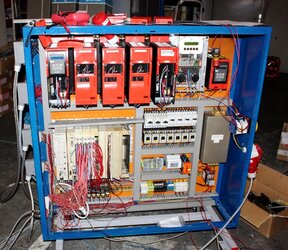- Joined
- Oct 11, 2005
- Location
- Tau'ri
Soemthing that might be simpler....
Check out the world record overclock videos for AMD. They use LHe.. since there is no way to keep it a liquid once it hits air... They blast the fog into the pot...
Now you wont hit hte -170C with it,, but perhaps a machine that either slow drips or fogs dedicated pots, air tight the case, and use a very low speed speed exhaust fan for chanellign the excess nitrogen outside (or if you have an accumulater a seperate system to recoolect and compress it.
LN2 generators are not cheap though so blowing it off might be better.
With some tweaking and experimentation you could get the drip working so that you can maintain a slightly sub-ambient temp under load. Which will drastically improve your LN2 consumption. Airtighting the box with only a very low (or even passive) exhaust system might help chill the entire box without worrying about condensation. Still probably blow through a 230L in a month.. but would be fun
Plus you could always dial it up for those 6Ghz benching runs
Check out the world record overclock videos for AMD. They use LHe.. since there is no way to keep it a liquid once it hits air... They blast the fog into the pot...
Now you wont hit hte -170C with it,, but perhaps a machine that either slow drips or fogs dedicated pots, air tight the case, and use a very low speed speed exhaust fan for chanellign the excess nitrogen outside (or if you have an accumulater a seperate system to recoolect and compress it.
LN2 generators are not cheap though so blowing it off might be better.
With some tweaking and experimentation you could get the drip working so that you can maintain a slightly sub-ambient temp under load. Which will drastically improve your LN2 consumption. Airtighting the box with only a very low (or even passive) exhaust system might help chill the entire box without worrying about condensation. Still probably blow through a 230L in a month.. but would be fun
Plus you could always dial it up for those 6Ghz benching runs


